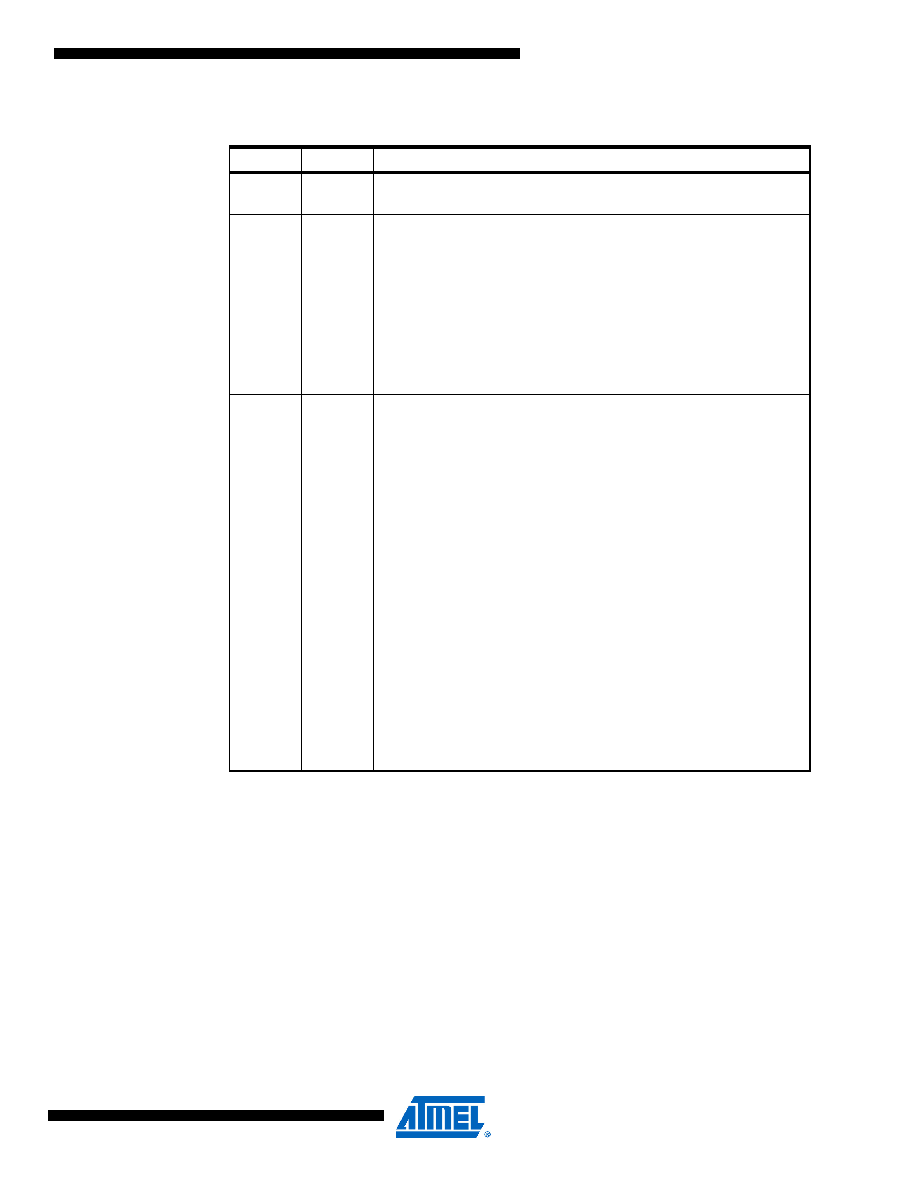- 您現(xiàn)在的位置:買賣IC網(wǎng) > PDF目錄25635 > MR80C52CXXX-25SHXXX:RD (TEMIC SEMICONDUCTORS) 8-BIT, MROM, 25 MHz, MICROCONTROLLER, CQCC44 PDF資料下載
參數(shù)資料
| 型號: | MR80C52CXXX-25SHXXX:RD |
| 廠商: | TEMIC SEMICONDUCTORS |
| 元件分類: | 微控制器/微處理器 |
| 英文描述: | 8-BIT, MROM, 25 MHz, MICROCONTROLLER, CQCC44 |
| 文件頁數(shù): | 119/392頁 |
| 文件大小: | 6486K |
第1頁第2頁第3頁第4頁第5頁第6頁第7頁第8頁第9頁第10頁第11頁第12頁第13頁第14頁第15頁第16頁第17頁第18頁第19頁第20頁第21頁第22頁第23頁第24頁第25頁第26頁第27頁第28頁第29頁第30頁第31頁第32頁第33頁第34頁第35頁第36頁第37頁第38頁第39頁第40頁第41頁第42頁第43頁第44頁第45頁第46頁第47頁第48頁第49頁第50頁第51頁第52頁第53頁第54頁第55頁第56頁第57頁第58頁第59頁第60頁第61頁第62頁第63頁第64頁第65頁第66頁第67頁第68頁第69頁第70頁第71頁第72頁第73頁第74頁第75頁第76頁第77頁第78頁第79頁第80頁第81頁第82頁第83頁第84頁第85頁第86頁第87頁第88頁第89頁第90頁第91頁第92頁第93頁第94頁第95頁第96頁第97頁第98頁第99頁第100頁第101頁第102頁第103頁第104頁第105頁第106頁第107頁第108頁第109頁第110頁第111頁第112頁第113頁第114頁第115頁第116頁第117頁第118頁當(dāng)前第119頁第120頁第121頁第122頁第123頁第124頁第125頁第126頁第127頁第128頁第129頁第130頁第131頁第132頁第133頁第134頁第135頁第136頁第137頁第138頁第139頁第140頁第141頁第142頁第143頁第144頁第145頁第146頁第147頁第148頁第149頁第150頁第151頁第152頁第153頁第154頁第155頁第156頁第157頁第158頁第159頁第160頁第161頁第162頁第163頁第164頁第165頁第166頁第167頁第168頁第169頁第170頁第171頁第172頁第173頁第174頁第175頁第176頁第177頁第178頁第179頁第180頁第181頁第182頁第183頁第184頁第185頁第186頁第187頁第188頁第189頁第190頁第191頁第192頁第193頁第194頁第195頁第196頁第197頁第198頁第199頁第200頁第201頁第202頁第203頁第204頁第205頁第206頁第207頁第208頁第209頁第210頁第211頁第212頁第213頁第214頁第215頁第216頁第217頁第218頁第219頁第220頁第221頁第222頁第223頁第224頁第225頁第226頁第227頁第228頁第229頁第230頁第231頁第232頁第233頁第234頁第235頁第236頁第237頁第238頁第239頁第240頁第241頁第242頁第243頁第244頁第245頁第246頁第247頁第248頁第249頁第250頁第251頁第252頁第253頁第254頁第255頁第256頁第257頁第258頁第259頁第260頁第261頁第262頁第263頁第264頁第265頁第266頁第267頁第268頁第269頁第270頁第271頁第272頁第273頁第274頁第275頁第276頁第277頁第278頁第279頁第280頁第281頁第282頁第283頁第284頁第285頁第286頁第287頁第288頁第289頁第290頁第291頁第292頁第293頁第294頁第295頁第296頁第297頁第298頁第299頁第300頁第301頁第302頁第303頁第304頁第305頁第306頁第307頁第308頁第309頁第310頁第311頁第312頁第313頁第314頁第315頁第316頁第317頁第318頁第319頁第320頁第321頁第322頁第323頁第324頁第325頁第326頁第327頁第328頁第329頁第330頁第331頁第332頁第333頁第334頁第335頁第336頁第337頁第338頁第339頁第340頁第341頁第342頁第343頁第344頁第345頁第346頁第347頁第348頁第349頁第350頁第351頁第352頁第353頁第354頁第355頁第356頁第357頁第358頁第359頁第360頁第361頁第362頁第363頁第364頁第365頁第366頁第367頁第368頁第369頁第370頁第371頁第372頁第373頁第374頁第375頁第376頁第377頁第378頁第379頁第380頁第381頁第382頁第383頁第384頁第385頁第386頁第387頁第388頁第389頁第390頁第391頁第392頁

205
2552K–AVR–04/11
ATmega329/3290/649/6490
Note:
1. The DI and USCK pins are renamed to Serial Data (SDA) and Serial Clock (SCL) respectively
to avoid confusion between the modes of operation.
Bit 3..2 – USICS1..0: Clock Source Select
These bits set the clock source for the Shift Register and counter. The data output latch ensures
that the output is changed at the opposite edge of the sampling of the data input (DI/SDA) when
using external clock source (USCK/SCL). When software strobe or Timer/Counter0 Compare
Match clock option is selected, the output latch is transparent and therefore the output is
changed immediately. Clearing the USICS1..0 bits enables software strobe option. When using
this option, writing a one to the USICLK bit clocks both the Shift Register and the counter. For
external clock source (USICS1 = 1), the USICLK bit is no longer used as a strobe, but selects
between external clocking and software clocking by the USITC strobe bit.
Table 20-1.
Relations between USIWM1..0 and the USI Operation
USIWM1
USIWM0
Description
0
Outputs, clock hold, and start detector disabled. Port pins operates as
normal.
0
1
Three-wire mode. Uses DO, DI, and USCK pins.
The Data Output (DO) pin overrides the corresponding bit in the PORT
Register in this mode. However, the corresponding DDR bit still
controls the data direction. When the port pin is set as input the pins
pull-up is controlled by the PORT bit.
The Data Input (DI) and Serial Clock (USCK) pins do not affect the
normal port operation. When operating as master, clock pulses are
software generated by toggling the PORT Register, while the data
direction is set to output. The USITC bit in the USICR Register can be
used for this purpose.
1
0
Two-wire mode. Uses SDA (DI) and SCL (USCK) pins(1).
The Serial Data (SDA) and the Serial Clock (SCL) pins are bi-
directional and uses open-collector output drives. The output drivers
are enabled by setting the corresponding bit for SDA and SCL in the
DDR Register.
When the output driver is enabled for the SDA pin, the output driver will
force the line SDA low if the output of the Shift Register or the
corresponding bit in the PORT Register is zero. Otherwise the SDA
line will not be driven (i.e., it is released). When the SCL pin output
driver is enabled the SCL line will be forced low if the corresponding bit
in the PORT Register is zero, or by the start detector. Otherwise the
SCL line will not be driven.
The SCL line is held low when a start detector detects a start condition
and the output is enabled. Clearing the Start Condition Flag (USISIF)
releases the line. The SDA and SCL pin inputs is not affected by
enabling this mode. Pull-ups on the SDA and SCL port pin are
disabled in Two-wire mode.
1
Two-wire mode. Uses SDA and SCL pins.
Same operation as for the Two-wire mode described above, except
that the SCL line is also held low when a counter overflow occurs, and
is held low until the Counter Overflow Flag (USIOIF) is cleared.
相關(guān)PDF資料 |
PDF描述 |
|---|---|
| MR80C154-20P883 | 8-BIT, 20 MHz, MICROCONTROLLER, CQCC44 |
| M44C588-XXX-DIT | 4-BIT, MROM, 4 MHz, MICROCONTROLLER, UUC |
| MC80C52EXXX-30 | 8-BIT, MROM, 30 MHz, MICROCONTROLLER, CDIP40 |
| MR80C52CXXX-16:D | 8-BIT, MROM, 16 MHz, MICROCONTROLLER, CQCC44 |
| MQ80C32E-30/883:RD | 8-BIT, 30 MHz, MICROCONTROLLER, CQFP44 |
相關(guān)代理商/技術(shù)參數(shù) |
參數(shù)描述 |
|---|---|
| MR80C86 | 制造商:INTERSIL 制造商全稱:Intersil Corporation 功能描述:CMOS 16-Bit Microprocessor |
| MR80C86/B | 制造商:Rochester Electronics LLC 功能描述:- Bulk 制造商:Harris Corporation 功能描述:Microprocessor, 16 Bit, 44 Pin, Ceramic, LCC |
| MR80C86-2 | 制造商:INTERSIL 制造商全稱:Intersil Corporation 功能描述:CMOS 16-Bit Microprocessor |
| MR80C86-2/883 | 制造商:Rochester Electronics LLC 功能描述:- Bulk |
| MR80C86-2/B | 制造商:Intersil Corporation 功能描述:MPU 80C86 16BIT CMOS 8MHZ 44PLCC - Rail/Tube |
發(fā)布緊急采購,3分鐘左右您將得到回復(fù)。